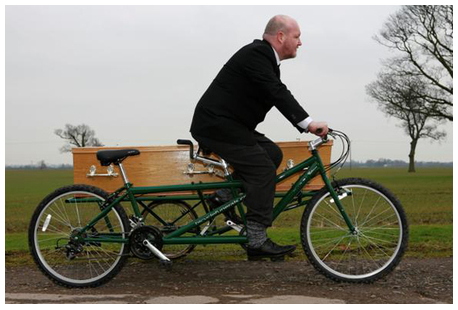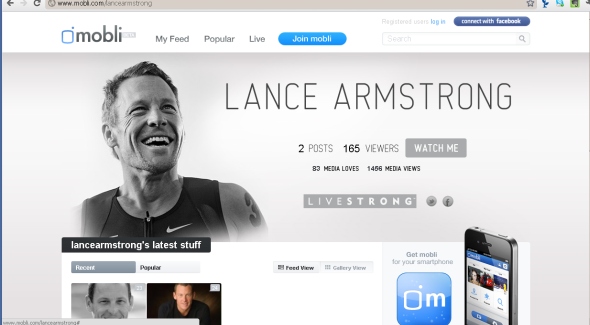As is my tradition, I completely forgot about last Sunday’s Super Bowl, which means I didn’t get see any of the 3.5-million dollar ads, which means I ended up hearing about these unavoidable nuggets of American culture before actually witnessing any of them directly. This is a little like hearing about a new movie and imagining much scarier scenes and bigger explosions than even what today’s special effects can manage. Left as I was to my own imagination there for a while, it seemed these commercials painted a pretty grim picture of humanity circa 2012.
Based on what I heard, we had a commercial where everyone who doesn’t drive a Chevy is killed in an apocalypse, and then one where a Great Dane kills a cat, then blackmails a guy to stay quiet about it using Doritos. Apparently that one won a contest.
You’ve seen the commercials, probably, but imagine you haven’t. Imagine somebody just told you about them. Better still, imagine you’re explaining them to a kid.
Hilarious, right? Everybody’s dead! Goddamn Ford owners deserved what was coming to them, ha, ha! Get it? Fuck those fuckers! Ah [wiping away tears of laughter], good stuff.
If we take Super Bowl ads for what everyone assumes them to be, thirty second snapshots of the zeitgeist of American culture, I’m not entirely sure what this year’s batch is saying about us, but it does sound like hating each other might have quietly become a new American pastime. It’s certainly become our main source of entertainment. Maybe my pal, Harold Camping was right after all, and the world as we once knew it actually did end back in May. The new world just slipped right into place, though, the same way each next step appears under your foot, even when you’re walking in the dark, on your way to the basement. You can really only live in a world where Jesus Christ has become a homophobic, pro-business, defender of our right to bear firearms for so long, before you have to admit we’re angry people.
But it’s a kinder, gentler, and more socially conscious sort of “mean.”
In increasing number of people, for instance, are choosing to commute by bicycle when robbing banks. This isn’t any real surprise in Eugene, Oregon, where the perpetrator of “violent takeover-style robberies,” appears to keep escaping by bicycle, and where one imagines the Oregon Financial Institutions Security Taskforce, or “FIST,” is currently searching the area–also of course on bicycle–in search of the suspect. But Marietta, Georgia? I’ve lived in Marietta, and feel confident in saying that anyone choosing to escape crime scenes by bicycle there will be dead within the week anyway. Given the drivers in and around the entire Atlanta area, the only challenge the FBI will have is identifying the body.
We’re all turned into mean-spirited asshats, is all I’m saying–not that that’s a bad thing. Don’t get me wrong. I’m secretly hoping for a zombie apocalypse as much as the next guy (makes sense for all sorts of reasons, like better job opportunities once the herd’s been thinned a bit, getting to shoot pretty much everything, finding a sweet car, the whole “Twinkie” thing). But Chevy co-opting Death on a Biblical Scale for a commercial? That’s bold. That slips past “fascinated with the end times” and “sick of my fellow man” and trucks right on into something worse, that genuine longing for some room to stretch our legs and some nice, deep, post-apocalyptic peace and quiet.
Comparatively, I guess the dog killing cat thing is cute because it’s like the dog was a mobster or something, so it’s funny because it was just like a human killed the cat, and it’s always funny when animals act like people. Especially when they’re killing shit. Get it now? Logically, though, this one doesn’t pass the smell test. Why wouldn’t the dog just poison the Doritos to get rid of the only witness? That would make perfect sense, except that I’m pretty sure most poisons are already ingredients found in Doritos, so it’s complicated.
These commercials, like so much else right now, genuinely speak to the “it’s me or you” crowd, the same movement that’s bringing us TV shows about people preparing for the end of the world. Why the tension? Various ancient cultures apparently offer slightly different scenarios, but a constant theme is that 2012 will be the year Life As We Know It is changed completely. That could be subject to different interpretations by different people, but I’m pretty sure I know what the big change is going to be.
650b
That’s right, life as you know it may very well be about to change, and once again Carl Schlemowitz from Vicious Cycles may be proven to have been way, way ahead of the curve. Here are a few reasons Goldilocks wheels are here to stay this time around.
- There Was Never a Good Reason for 26″ Wheels in the First Place – One of the most important things 29ers did was dispel the myth of the 26″ wheel, which might as well have been chosen arbitrarily. When it comes to the preeminence of 26″ wheels in the world of mountain bikes, once the flood gates of doubt opened up, it became pretty which wheel size couldn’t swim. The 29er could never replace a 26″ wheel, but a 27.5″ wheel just might. And probably should. Get over it Europe. The 26″ wheel is stupid for anyone over five feet tall. That’s 152.4 centimeters.
- Nobody Wants to Look Stupid After Missing that 29er Thing – Once we hit that tipping point, adoption is going to happen with the quickness here. Not only did some companies look stupid for panning 29ers up until they finally caved in and released one (which then shot to the top of their sales charts and stayed there), but some companies made much more money by betting on the right horse. Money equals motion. Everybody wants to cover this next move, when it comes.
- Forks and Rims Are Already Here – The real teeth-pulling with 29ers happened around the rim, tire and fork manufacturers, but for 650b, that part of the puzzle’s already in place. It’s also a manufacturing reality that you just have to make different sizes now. All this shit is being mass-produced in China anyway, so you really can’t bitch about your overwhelming productions costs to Americans who pay more for a cup of coffee than it costs to have a tire made in China. You’re making two sizes of tires and rims already. Might as well just make another one.
- 650b Bikes Won’t Suck – By definition, they were designed to be the middle of the road, and, unless you’re a GOP candidate, that’s never a particularly dangerous place to be. Something like a 36″ tire will be pretty unlikely to be adopted by everyone, but a bike that rolls a bit better than a bike with 26″ wheels, but in all other ways feels about the same but has marketing buzz? That’s not a hard bike to sell. A 29er was a big difference, but the only people still riding 26″ wheels wouldn’t even know the difference if you put 27.5″ wheels on their bike.
- The Industry Needs This – Not just because new trends have to constantly drive you to want a new bike, but due to some very concrete reasons, there is a very powerful lobby going on for the middle wheel size right now. This is led largely by companies with skin in the five to seven inch travel frame game. You just can’t get enough distance between stuff to have a “longer travel” 29er. Something’s got to give. A system is already in place at most manufacturers to make that something a 650b long-travel suspension frame.
Don’t panic. The reality is that 650b is–one way or another–coming. The best thing to do is stay calm, stock up on water, keep an open mind, and don’t eat Doritos. They’re made with cats.























